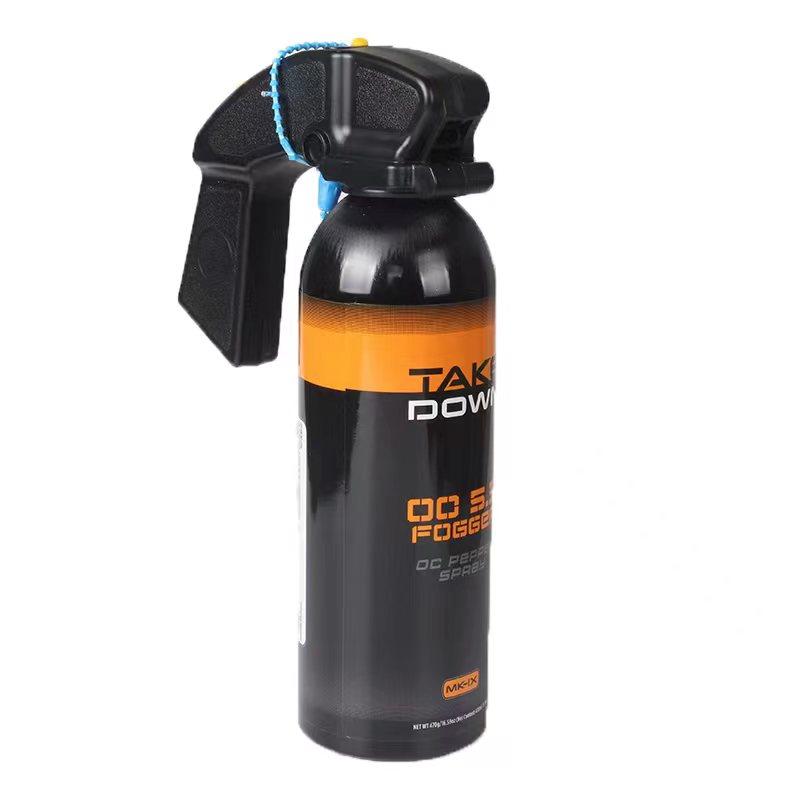Table of Contents
- Understanding the Chemical Composition of Pepper Spray
- How Capsaicin Concentration Affects Effectiveness and Safety
- The Role of Carrier Agents and Preservatives in Pepper Spray Formulations
- Choosing the Right Pepper Spray Based on Your Personal Needs and Environment
- Final Thoughts
Understanding the Chemical Composition of Pepper Spray
Pepper spray is a potent self-defense tool primarily composed of oleoresin capsicum (OC), a natural extract derived from hot chili peppers. This key ingredient is what gives pepper spray its intense heat and causes irritation on skin, eyes, and mucous membranes, effectively incapacitating an attacker. To ensure optimal dispersal and effectiveness, the OC is suspended in a carrier fluid, which typically includes a mix of water and alcohol or other stabilizers. Additionally, the spray often contains a propellant – usually a compressed inert gas – to project the irritant forcefully and accurately over a distance.
While formulations may vary across brands, many pepper sprays feature added elements to enhance usability and shelf life, such as:
- UV dye: Marks the target for easy identification after an incident.
- Fragrances: Sometimes used to mask or reduce the already pungent natural odor of OC.
- Anti-clogging agents: Ensure the spray mechanism remains reliable even after multiple uses or over time.
Understanding these components not only highlights the scientific sophistication behind pepper sprays but also underscores why regulations and proper usage guidelines are critical for safety and effectiveness.
How Capsaicin Concentration Affects Effectiveness and Safety
The power behind pepper spray lies in its active component, capsaicin, a natural irritant extracted from chili peppers. This substance is measured in Scoville Heat Units (SHU), and the concentration present in the spray directly impacts both its effectiveness and user safety. Higher capsaicin concentrations generally lead to a stronger inflammatory response, causing more intense eye irritation, coughing, and temporary blindness, which can incapacitate an attacker more quickly. However, this does not necessarily mean that the highest concentration is the best choice for every situation; finding a balance is crucial.
When considering safety alongside effectiveness, capsaicin levels typically range between 0.18% and 1.33% in commercially available sprays. Products on the lower end tend to produce milder effects, reducing the risk of long-term harm or accidental injury, making them suitable for personal defense in urban or crowded environments. In contrast, higher concentrations offer rapid deterrence but come with increased risks of severe reactions, especially for individuals with respiratory issues or sensitive skin. Keep in mind:
- Lower concentration: Safer for bystanders and users, effective for general self-defense.
- Higher concentration: More potent, but potentially hazardous without proper training.
- Legal restrictions: Some regions regulate maximum capsaicin levels, so always check local laws.
The Role of Carrier Agents and Preservatives in Pepper Spray Formulations
Carrier agents in pepper spray serve as the essential medium that ensures the effective delivery of the active capsaicinoids onto the target. These agents are carefully chosen to maintain stability, facilitate dispersion, and optimize the spray pattern for maximum penetration and adherence. Common carriers include inert solvents like ethanol or water-based solutions, which aid in controlling the viscosity and evaporation rate of the spray. The choice of carrier not only impacts the performance of the pepper spray but also its safety profile, ensuring minimal toxicity and skin irritation beyond the intended defensive use.
Preservatives play a crucial role in extending the shelf life and maintaining the potency of pepper spray formulations. By preventing microbial growth and chemical degradation, preservatives ensure that the spray remains reliable and effective over time. Ingredients such as benzalkonium chloride or phenoxyethanol are frequently integrated into formulations due to their broad-spectrum antimicrobial properties. Incorporating these substances is vital, especially for products stored under varying environmental conditions, as they keep the pepper spray consistent in quality and ready for use whenever protection is needed.
- Carrier Agents: Ethanol, water-based solutions, propylene glycol
- Preservatives: Benzalkonium chloride, phenoxyethanol
- Key Functions: Stability, dispersion, antimicrobial protection
Choosing the Right Pepper Spray Based on Your Personal Needs and Environment
When selecting a pepper spray, take into account your daily environment and how you’ll be carrying the device. For urban settings where close encounters are common, a compact, keychain-sized canister with a quick-release mechanism can provide immediate protection without being cumbersome. Conversely, if you’re in a rural or open area where encounters might happen at a distance, opting for a spray with a longer reach and wind-resistant formula is advisable. Additionally, consider the spray pattern-stream sprays offer precision and less chance of self-contamination, while fog sprays cover a wider area but may be more susceptible to environmental factors like wind.
Personal lifestyle factors also play a significant role in your choice. For individuals with sensitive skin or respiratory concerns, models containing lower concentrations of OC (oleoresin capsicum) or those marked hypoallergenic can reduce adverse reactions. If you require a device for running or biking, look for models that are sweat-resistant and easily accessible, such as wrist or arm holsters. Lastly, familiarize yourself with local regulations regarding pepper spray usage, as restrictions may affect which formulations or device sizes are permissible in your area.
Final Thoughts
In understanding the key ingredients of pepper spray, we gain valuable insight into how this powerful self-defense tool works and why it’s effective. From capsaicin’s fiery impact to the role of carriers and irritants, each component plays a crucial part in delivering a quick, non-lethal means of protection. Whether you’re considering pepper spray for personal safety or simply want to be informed, knowing what’s inside helps you make smarter choices and use it responsibly. Stay safe, stay informed, and always prioritize awareness alongside any self-defense measures.Check Our Other Blogs
- StunGun – Your Trusted Source for Stun Guns, Laws, and Self-Defense Tips
- PepperSprayLaws – Your Trusted Resource for Pepper Spray Information
- StunGunLaws – Your Trusted Guide to Stun Gun Legality and Safety




